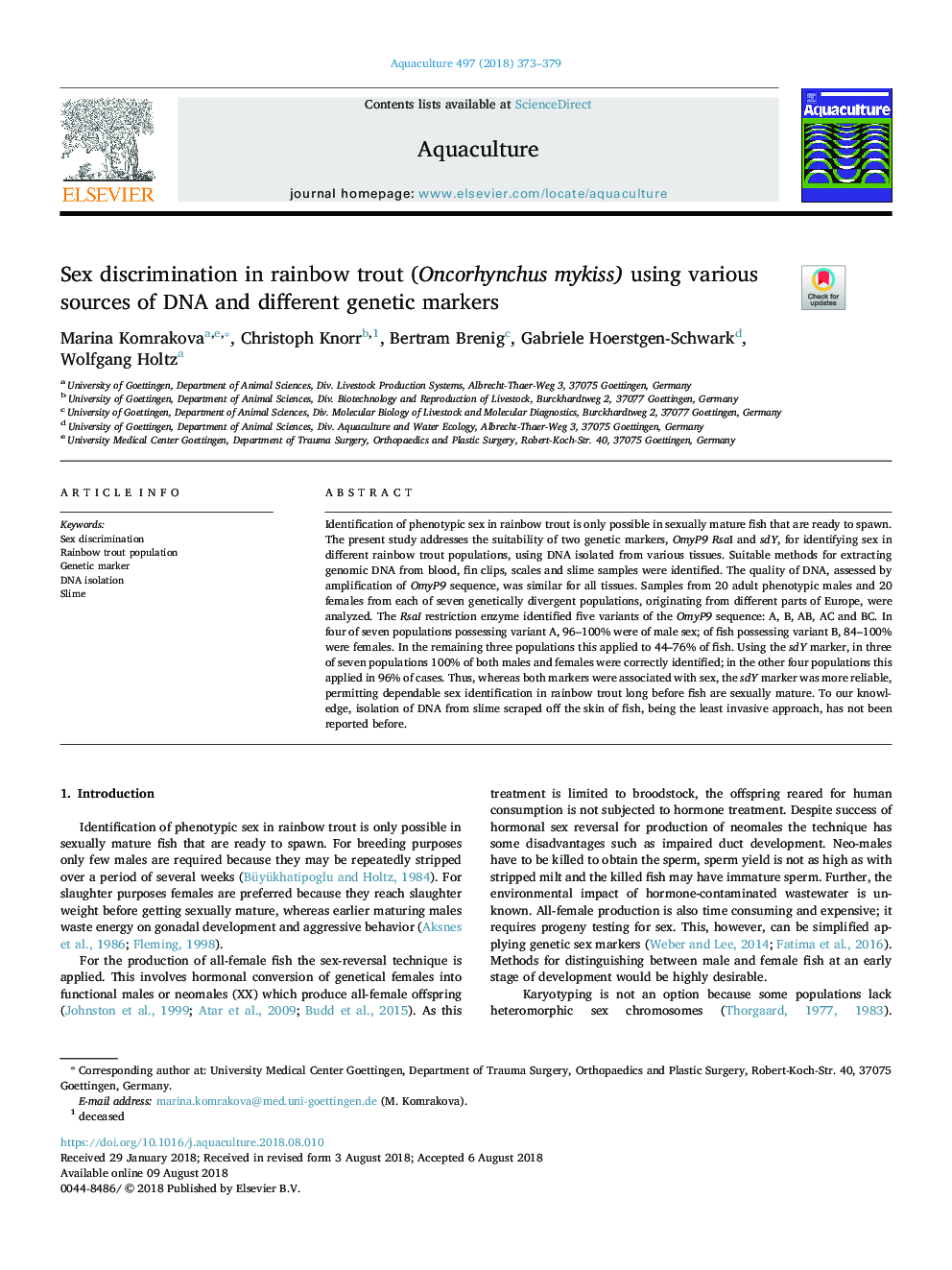| Article ID | Journal | Published Year | Pages | File Type |
|---|---|---|---|---|
| 8492915 | Aquaculture | 2018 | 7 Pages |
Abstract
Identification of phenotypic sex in rainbow trout is only possible in sexually mature fish that are ready to spawn. The present study addresses the suitability of two genetic markers, OmyP9 RsaI and sdY, for identifying sex in different rainbow trout populations, using DNA isolated from various tissues. Suitable methods for extracting genomic DNA from blood, fin clips, scales and slime samples were identified. The quality of DNA, assessed by amplification of OmyP9 sequence, was similar for all tissues. Samples from 20 adult phenotypic males and 20 females from each of seven genetically divergent populations, originating from different parts of Europe, were analyzed. The RsaI restriction enzyme identified five variants of the OmyP9 sequence: A, B, AB, AC and BC. In four of seven populations possessing variant A, 96-100% were of male sex; of fish possessing variant B, 84-100% were females. In the remaining three populations this applied to 44-76% of fish. Using the sdY marker, in three of seven populations 100% of both males and females were correctly identified; in the other four populations this applied in 96% of cases. Thus, whereas both markers were associated with sex, the sdY marker was more reliable, permitting dependable sex identification in rainbow trout long before fish are sexually mature. To our knowledge, isolation of DNA from slime scraped off the skin of fish, being the least invasive approach, has not been reported before.
Related Topics
Life Sciences
Agricultural and Biological Sciences
Aquatic Science
Authors
Marina Komrakova, Christoph Knorr, Bertram Brenig, Gabriele Hoerstgen-Schwark, Wolfgang Holtz,
